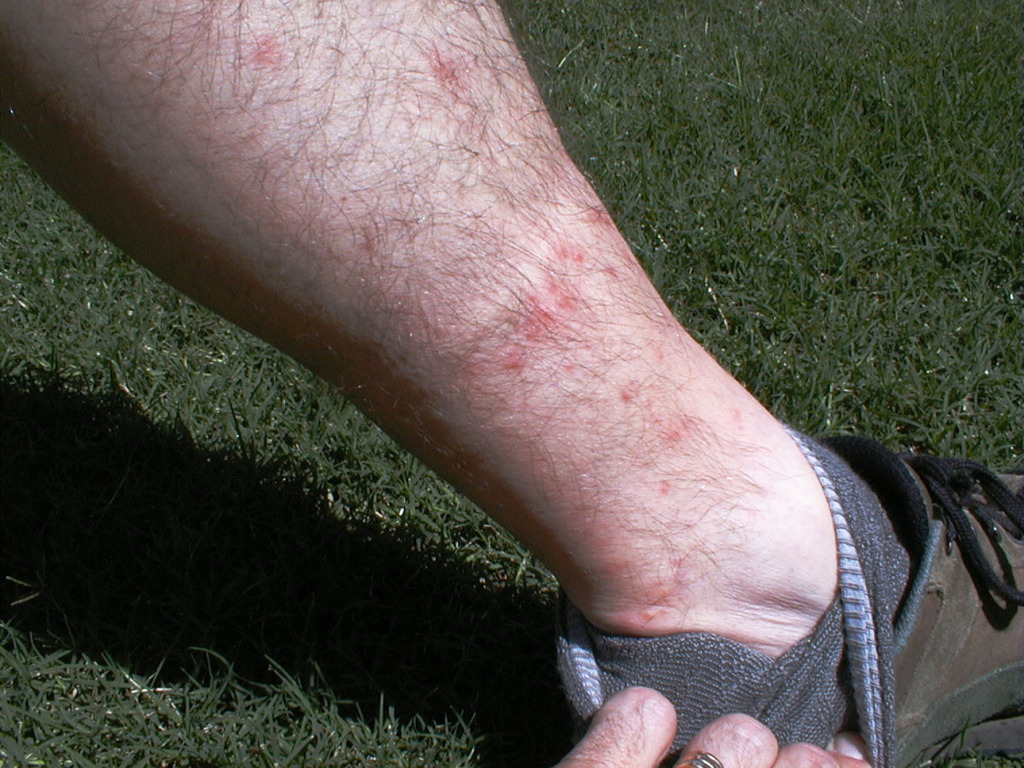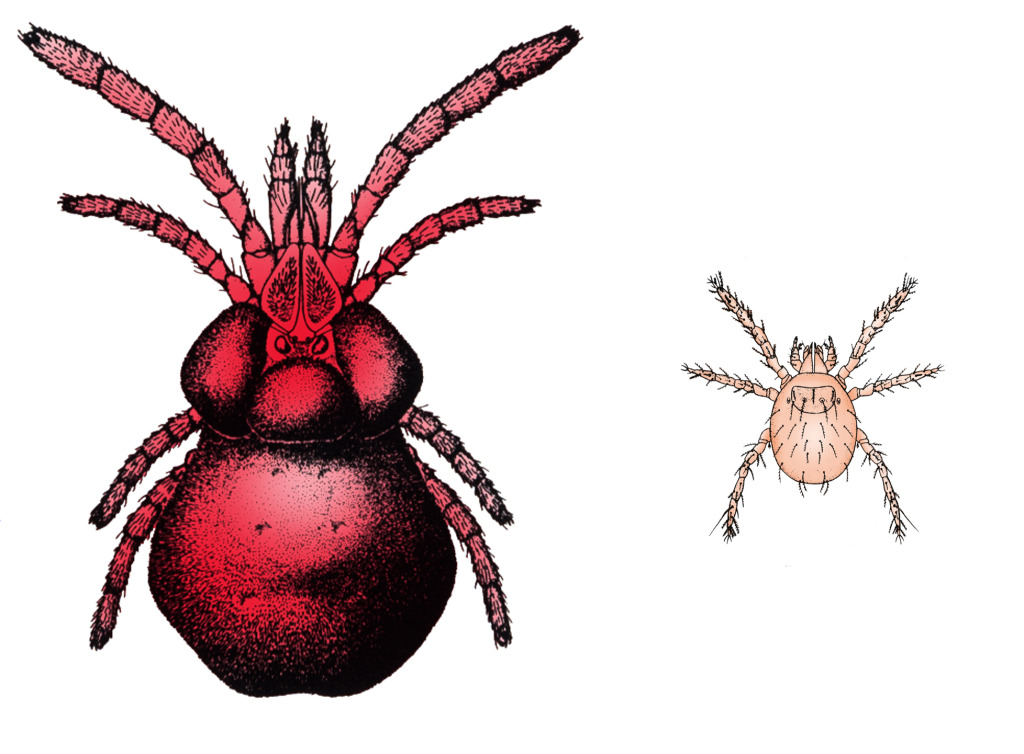
Chiggers seem to settle and bite most under areas of snug clothing. Note the bites around the ankles and sock line.
It’s October, I’m still scratching chigger bites. Two weeks ago I gave a talk for Master Naturalists at the Hagerman National Wildlife Refuge headquarters, and we took a 15 minute “field trip” to the flower garden around the building. The next day I counted 30 plus bites. Last weekend I swear I never left a sidewalk, and still felt the tell-tale itch of chigger bites. It could be just me but I’ve been getting calls from others, too, about chiggers over the past month.
Chiggers are my personal least favorite arthropod. They’re nearly impossible to see. They show up when you’re outdoors and don’t expect them. They itch like blazes, in all the wrong places. And this year they seem to be active later than usual.
So what’s happening? I know of no one who formally studies chiggers in Texas, but in my experience chigger activity usually in highest in spring and early summer, and trails off during the heat and dryness of mid summer. Because of their delicate nature and small size, chigger larvae are sensitive to heat and low humidity. Perhaps it was our cooler summer this year, or maybe it’s due to timeliness of the few showers we got in north Texas during July and August (this was not a wet summer and September was the driest on record); but for whatever reason my chigger meter is pegging out.

Adult and larval chigger. Only the newly hatched larva is parasitic. After a blood meal the almost invisible larva leaves its host and becomes a predator of tiny arthropods in the soil. (Modified from Michener 1946)
There are relatively few researchers who want to do field research with chiggers. Imagine that! But several years ago some work that was done in Nebraska, that gives us some ideas about what can be done about chiggers. Dr. Fred Baxendale and his student Tom Eickhoff published a report on the effectiveness of several different insecticides on chiggers. They marked out and sprayed some grassy plots, and to evaluate the treatments they threw a black clipboard on the ground for 45-50 seconds, retrieved it and counted all the chiggers (chiggers quickly crawl on to dark, warm objects on the ground). Not my idea of fun research… I hope Tom was not as highly attractive to chiggers as I am. Anyway, they found that bifenthrin performed the best, eventually resulting in 96% control. Two other pyrethroid insecticides, lambda-cyhalothrin and cyfluthrin, did almost as well; but none of the insecticides provided 100% control. Liquid sprays worked better overall than granular insecticides.
Most of us do not encounter chiggers in our back yards, but if you do, you should consider treating with bifenthrin spray. The easiest way would be to purchase a liquid concentrate (Ortho Home Defense™ is one brand) and apply it to grass and higher vegetation using a hose-end sprayer. You should expect two weeks or more control with a single application.
The other chigger defense is to apply a good repellent. DEET repellent applied to the shoes, socks and pants will significantly repel chiggers. Old-timers in Texas will also tell your to use a sock filled with dusting sulfur. Banging the sock against your shoes, pants, socks and legs will give you a dusting that seems to repel chiggers. I don’t know if it’s as effective as DEET, but it is cheap and easy to use. Farmers often just keep a sock in the back of the pickup truck and dust themselves when they have to wade into possible chigger territory.
Tucking your pants legs into your socks also seems to help keep chiggers from getting quick access to your skin. Since most chiggers seem to crawl onto the skin after climbing from shoes and socks, tucking pants into socks makes them have to work harder to strike pay dirt. And because chiggers may crawl around for an hour or more after hitching a ride, taking a hot shower just after a chigger exposure seems to help reduce chigger bites.
For more information about chiggers, see the factsheet E-365 Chiggers.
